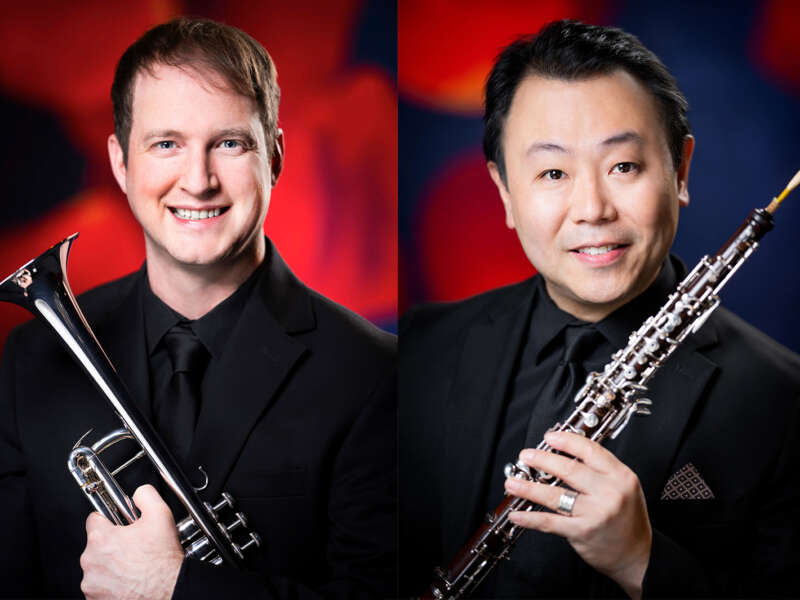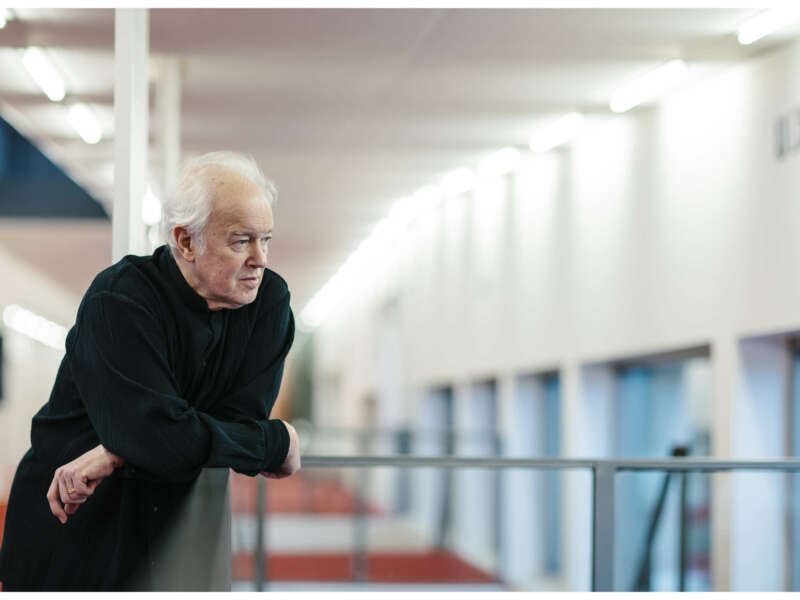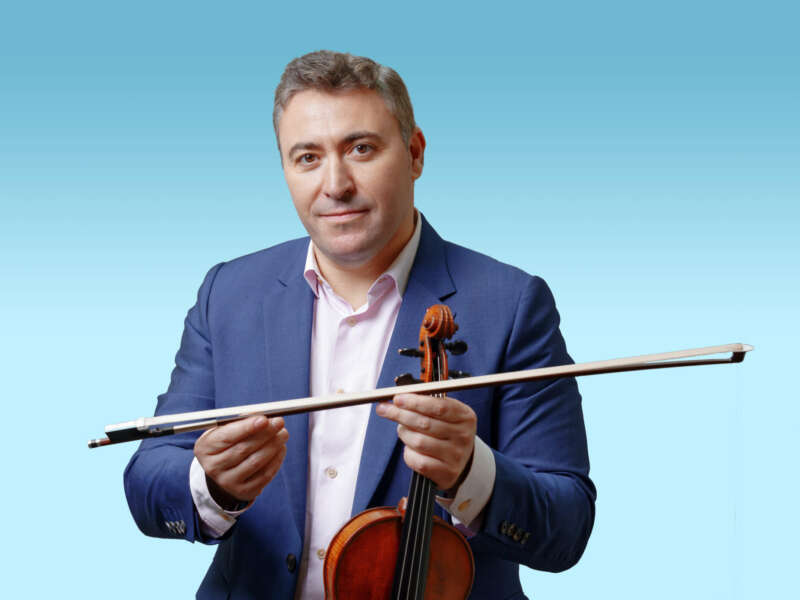VENGEROV'S VIEWS | Violinist Maxim Vengerov on Developing your Own Sound
In this, the second of eight teaching classes, violinist Maxim Vengerov shares with us important elements to develop your own, individual sound
To help celebrate the launch of our new site, and the re-launch of Maxim Vengerov's new website, maximvengerov.com, over the coming weeks the superstar violinist, teacher, and conductor, will be guest presenting a series of exclusive teaching advice classes for our readers, teachers, and students everywhere.
Accompanied by helpful teaching videos that demonstrate key concepts, Maxim will cover a wide range of topics including sound, left and right-hand technique, bowing, breathing, harmony and structure, and interpretation.
In today’s second lesson, Maxim discusses how to develop your own sound.
Join us over the coming weeks, and be sure to share the classes with your own students and friends, and let us know how Maxim’s advice has helped you on your journey to learn more.
INTRODUCTION
As a musician, your sound is your identity, your fingerprint. The sound of any great artist is instantly recognizable, because it is so individual. In the same way, we recognize someone we know on the telephone because their voice and manner of speaking is uniquely theirs. Developing your sound is an important step toward becoming an artist and discovering your own musical personality.
Writing about sound is a challenging exercise: words fail to describe sound, because everyone would describe it differently. In addition, when we speak about sound, we can be speaking about different things, in particular, range of volume, quality of tone, and variety of colors.
Nevertheless, I would like to give this challenge a try and share with you some ideas which may be of help. I will build on these in the next articles in this series which cover foundational technical considerations in greater depth.
WHAT DOES "GOOD SOUND" MEAN?
"The more colors you can imagine and produce in sound, the greater your expressive possibilities will be."
The short answer to this question is: “it depends!” Sound is not one-dimensional, not one color, it is a rainbow of colors to choose from. Each composer’s music is like a different planet and requires a different sound world. The right choice of sound and color will depend on the music you play, and how you feel it.
Even if a sweet tone with lush vibrato is often considered a default “beautiful sound”, if you always played like this, it could make the music sound saccharine, like a dessert with too much sugar in it. Similarly, if you always played with a dense and focused tone, it might be too heavy, like a big meal with only carbohydrates. Even a seemingly “ugly” sound, scratchy or unpleasant, blank or dry, can have a place as an expressive effect if the music needs it. These are like the bitter or sour notes which can bring the flavor profile to life, and are an important complement to a “beautiful” sound.
In an orchestra, there are so many different instruments and combinations a composer can choose from, giving countless possibilities for different sounds and colors. Then, the job of the conductor is to bring the players together into a unified sound and vision of the music - showing clear intent from the very first upbeat, not only for tempo, but also character, coloring and mood. (An orchestra can play on its own, but without a conductor there would be as many colors as musicians.)
As instrumentalists, we are only one person with one instrument, so we do not have as many possibilities as a whole orchestra - but there is still an entire sound world we can create.
The greatest artists can even make their instrument sound like another one, almost like a magician. The violin offers rich possibilities: it can sound vocal, like a singer, or breathy, like a flute, or deep, like a cello, or focused and rich, like an oboe, or even percussive, like a piano. This chameleon's ability to transform your sound is especially important when you play chamber music or with an orchestra, when you and your musical partners should try to blend your sound together.
So, whilst it is important to know how to create a beautiful sound on your instrument, it is even more important to develop your ability to imagine and create many different kinds of sounds, and to know when to use them according to the demands of the music. Like life, music is not one-dimensional - it is the variety and contrasts which make it interesting and memorable, and which will make you memorable as a performer.
DEVELOPING YOUR SOUND
“Your sound stems from how you use your body, drawing on the possibilities your instrument and surrounding acoustic offer you.”
There are three main ingredients contributing toward your sound: firstly, your body and how you use it; secondly, your instrument; and thirdly, the acoustic in which you play. Some of these ingredients you cannot easily change: your physical makeup and build; the possibilities your instrument provides (unless you change instrument); and the acoustics of your surroundings, to which you also need to be able to adapt.
The ingredient which lies within your control, and the one you can work on, is how you use your body - your technique. The more developed your technique is, the more control you will have, and therefore the more possibilities in sound you will have. Then these all become like additional ingredients you can choose from for a recipe and flavors you want to create: the musical composition, and your interpretation of it.
Whichever stage you are at in your musical journey, you can always continue to expand the horizons of your imagination. Keep your imagination one step ahead of your technical ability and try not to limit yourself only to what lies within your comfort zone. Your technique is there to serve and fit around your imagination and the music, not the other way around.
By challenging yourself to find ways to realise new expressive ideas, you will improve your technique, and develop as an artist. This is something I have continued to work on throughout my career, drawing inspiration from different kinds of music and ways of music-making.
For every new concerto I learned, for example, I had to acquire new technique, from playing baroque works on period instruments, to the works of 20th-century composers such as Shostakovich, Prokofiev and Stravinsky, through to new 21st-century works. These all inspired me differently and challenged me to adapt my playing accordingly, adding new dimensions to my sound as a violinist.
TECHNICAL CONSIDERATIONS FOR SOUND PRODUCTION
“Good sound starts with your inner ear and imagination. Your technique is how you find a physical solution to bring these ideas to reality.”
Many technical variables are involved in sound production. To name just a few: bow speed, pressure into the string, the position of the contact point between the bridge and fingerboard, whether you play with the bow hair flat or on an angle, and even the amount of rosin.
However, it is not only the right hand and the bow you should consider when it comes to sound - the left hand is also important (which may seem non-intuitive.) For example, for a focused and clear sound, you need a good connection with the fingers of your left hand and the string, pressing all the way to the fingerboard. The angle your fingers contact the string also affects the sound - from more vertical (for a precise and narrow sound) to more flat (for a rounder sound.)
There are some common “danger zones” as string players we should keep in mind, where it is easy to lose the quality or connection to the sound. These include bow changes, string changes, shifts, and open strings. Sometimes the right hand can also become a little “distracted” by the staccato action of the left hand fingers, resulting in a portato effect where the connection to the sound is diminished between notes, instead of a continuous legatissimo line.
However, above all, the most important aspect to develop is your imagination. You should know exactly what sound you want, in your inner ear. When an artist paints a painting, first of all he (or she) imagines what he wants to depict, and only then, takes the brush, chooses the right color from his palette, and starts to paint. It is exactly the same in music: we must first imagine the coloring and the character before we begin to play, and not vice versa. This is something which is easy to forget in the routine of everyday practising - it is important to sometimes work without your instrument, and to keep your imagination as your guide when you play.
At the same time, you should also develop your ear and the ability to listen very carefully and precisely to the sound you actually produce. Then, you need to be honest with yourself and assess the gap between what you play, compared to what you want.
By developing these abilities, with some experimentation you will find the right set of technical variables to make the sound you are looking for. In this way, you will add new dimensions to your technical abilities, and new colors to your personal sound palette.
TO CONCLUDE
Your sound is your most important asset as a musician. When we play music written by others, we do not invent the notes. What we bring to the music as performers, among other things, is the coloring. A composer can suggest the character, but even the language of musical notation cannot specify the precise colors.
Colors are emotions. Without colors, the music is empty, and playing it becomes purely physical exercise - this is not why we make music. The colors are up to us as the performer to choose, following the suggestions in the score (e.g. the harmony changes) and how we feel them, and drawing on the possibilities our instrument, acoustic and technical resources offer us.
The more expressive possibilities in sound we are able to bring, the more we are able to offer the music and our audience as a performer. We bring our audience on a musical voyage and transport them to worlds as far apart as Mozart and Shostakovich. Our sound should differ when playing different composers, whilst at the same time remaining personal to us - the trace of our musical soul should still be recognizable. The more we develop and show these different facets of our musical personality, the more interesting and versatile we become as an artist. This ability is the ultimate virtuosity, and what every artist should strive for.
I hope these thoughts help demystify some of the key concepts around sound, and give some useful ideas for things to work on. Ultimately, your sound is your own musical voice, and how you use it is already interpretation in itself.
Watch the full teaching video below, where Maxim explains in further detail and demonstrates the concepts he introduces in this article:
Previous post:
To find out more about Maxim, including his recordings and upcoming performances, visit www.maximvengerov.com.
You can also subscribe to his YouTube channel and follow his official social media sites:
april 2024
may 2024


































